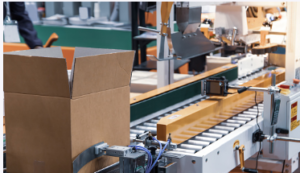RFID readers are used to read and write data to tags. They can be mobile or fixed.
They are also used to detect and store data about items. They are available in various frequencies and can be adapted to multiple applications. The application determines the type of tag used.
 Detection
Detection
Radio-frequency identification (RFID) is a technology that uses electromagnetic fields to identify and track objects through small tags attached to them. The technology is used in various industries, including retail, transportation and logistics, healthcare, and manufacturing.
RFID reader tags contain a microchip containing information about the item they are attached to, often without generating electricity. A reader then decodes the tag’s data into an electronic signal that another device can read.
The most common use of RFID is in retail, but it is also used to track inventory in warehouses and other places with high volumes of items moving through their facilities. For example, clothing wholesaler Advanced Apparel uses RFID to determine where each of its shipments is located in its warehouses, so it can minimise out-of-stock situations and ensure merchandise arrives in the correct quantity and location.
The RFID reader is a vital system feature, which can be a fixed or mobile device. For example, a fixed reader stays in a specific area and automatically scans tags as they pass by. In contrast, a portable reader is a handheld device allowing employees to quickly and easily browse RFID tags anywhere.
Fixed readers are often placed around an oil rig or industrial facility to identify and find staff when needed. They are also used in hospitals and animal control to track medical treatment and keep records of animals.
Mobile readers can be handheld devices or vehicles embedded with a reader, which has the benefits of hands-free scanning and wireless networking. They can also be connected to a host computer, so tagged items can be transmitted directly to the host for processing.
RFID is a rapidly growing technology that improves efficiency and accuracy in many applications. It is because it eliminates manual processes and increases process automation. Additionally, it can decrease labour costs and reduce inventory carrying expenses. In addition, it improves customer satisfaction by ensuring that shipments arrive in the correct quantity and on time.
Data Storage
RFID systems are a powerful tool that can significantly improve inventory accuracy. In addition, they can increase throughput and help you track stock in real time, meaning shipments can be sent out on time and in the correct quantity.
Data Storage is essential to an RFID system because it allows you to collect and analyse item information. This data can create more effective and efficient shipments and improve customer satisfaction.
The data stored on RFID tags can be as simple as a serial number or complex as clusters of information organised into a digital database. The amount of data on each tag can vary but typically ranges from one to several pages.
You can read data from an RFID tag using a reader, a device containing antennas that send and receive radio signals. These antennas can be handheld or mounted in a fixed location.
RFID is a relatively low-powered technology that can be integrated with other sensors to enhance data collection capabilities. For instance, you could use an RFID reader to monitor a warehouse’s cold chain by monitoring the temperature of perishable items in transit.
The RFID reader can then communicate with other devices that use wireless networks, such as ZigBee or Bluetooth, to share data. It can make the process easier and faster than traditional barcode scanners or printers.
An RFID reader can also be programmed with a Software Development Kit (SDK), which includes documentation about the RFID reader and access to APIs that allow you to write code for the reader. It makes it easy to start with the technology and test your application.
Communication
RFID tags communicate with a reader via radio waves to provide identification and other information. This information can be stored on the RFID tag as a 96-bit string of data called an electronic product code (EPC).
An RFID reader reads the EPC, which contains various asset-related data, including an organisation, description, and serial number. Then, it transmits the information to a system user, server, or database that updates the data on the tag as needed.
The RFID reader can use various frequencies to read the EPC. For example, ultrahigh-frequency (UHF) systems can be read 25-plus feet away, while microwave RFIDs run at 2.45 GHz.
Low-frequency RFID systems are also widely used in industrial applications, such as tracking oil rigs and livestock. In addition, they are often smaller and less expensive than the UHF systems.
A single reader can read and write the RFID data from multiple tags in most industrial settings. It is because the reader has a wide detection range, meaning many tags can be read within one area.
Security
RFID readers are a vital component of access control systems. They’re often installed to provide an added layer of security to buildings and facilities, enabling businesses to meet compliance and regulatory requirements while protecting people from theft or criminal activity.
RFID has a lot of great benefits over traditional barcode-based access methods, including being durable and easily adaptable for different deployments. But, like all wireless technologies, it comes with security concerns and issues that system architects and end users must address.
